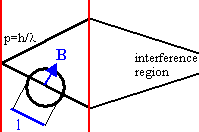

Define the standard components of a vector operator V as the three operators
![]() .
.
Using the standard components of the two vector operators V and W we construct the operator
![]() .
.
where the <1,1;p,q|K,M> are the Clebsch-Gordan coefficients entering into the addition of two angular momenta.
(a) Show that [V(1) Ä W(1)](0)0 is proportional to the scalar product V·W of the two vector operators.
(b) Show that the three operators [V(1) Ä W(1)](1)M are proportional to the three standard components of the vector operator V´W.
(c) Express the five components [V(1) Ä W(1)](2)M in terms of Vz, V+=Vx+iVy, V-=Vx-iVy, Wz, W+=Wx+iWy, and W-=Wx-iWy.
(a) Relate, as much as possible, the matrix elements
<n',l',m'|-(2)-1/2(x+iy)|n,l,m>, <n',l',m'|(2)-1/2(x-iy)|n,l,m>,
and <n',l',m'|z|n,l,m>, using only the Wigner-Eckart theorem.
Make sure to state under what conditions the matrix elements are
non-vanishing.
(b) Do the same problem using the wavefunctions y(r)=Rnl(r)Ylm(q,f).
Consider a neutron interferometer.

Prove that the difference in the magnetic fields that produces two successive maxima in the counting rates is given by
DB=4phc/(|e|gnll),
where gn (= -1.91) is the neutron magnetic moment in units of -eh/(2mnc).
The hyperfine splitting in the hydrogen atom can be discussed in terms of a perturbation AI·J, where I and J are the spin angular momentum operators of the proton and electron respectively and A is a constant. The total angular momentum operator is F=I+J.
(a) Calculate the expectation value < AI·J
>I,J,F.of the perturbation in the state characterized by the quantum
numbers I, J, and F.
(b) Let DV=B(gIIz+gJJz).
Calculate <DV>I,J,F.